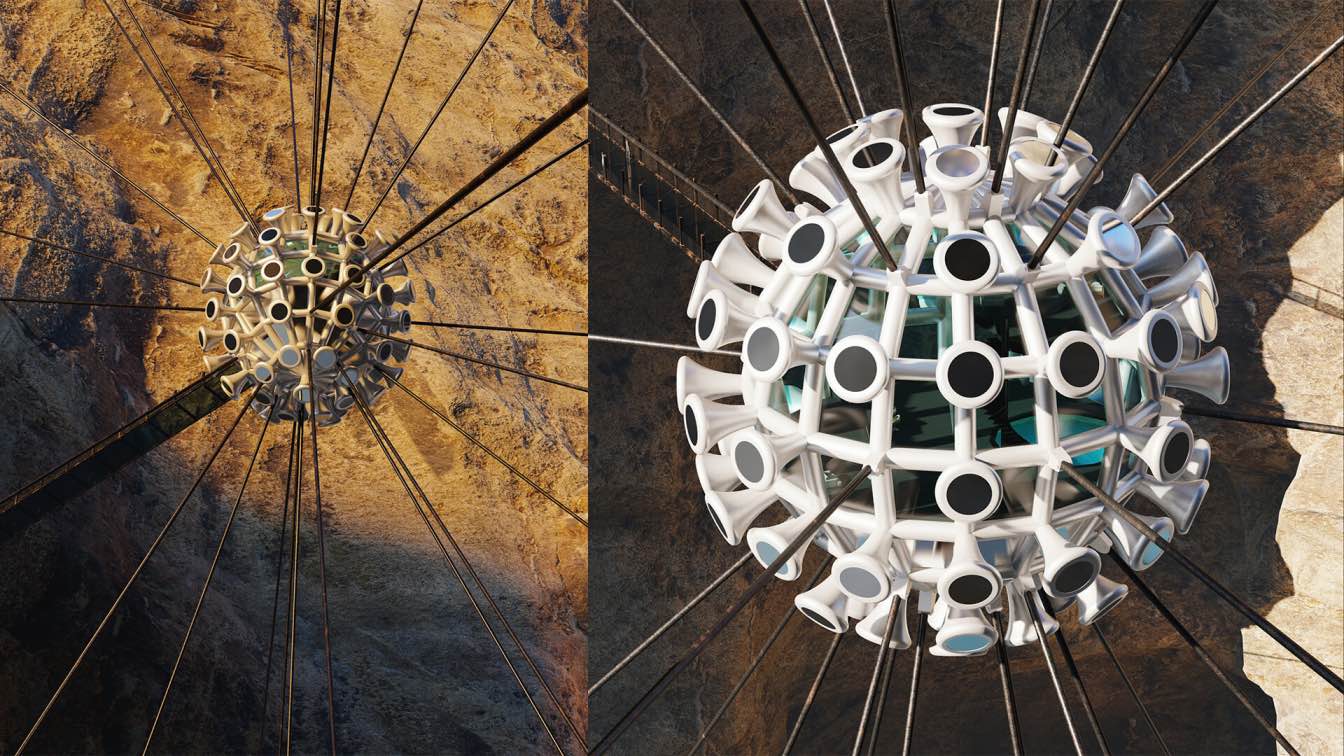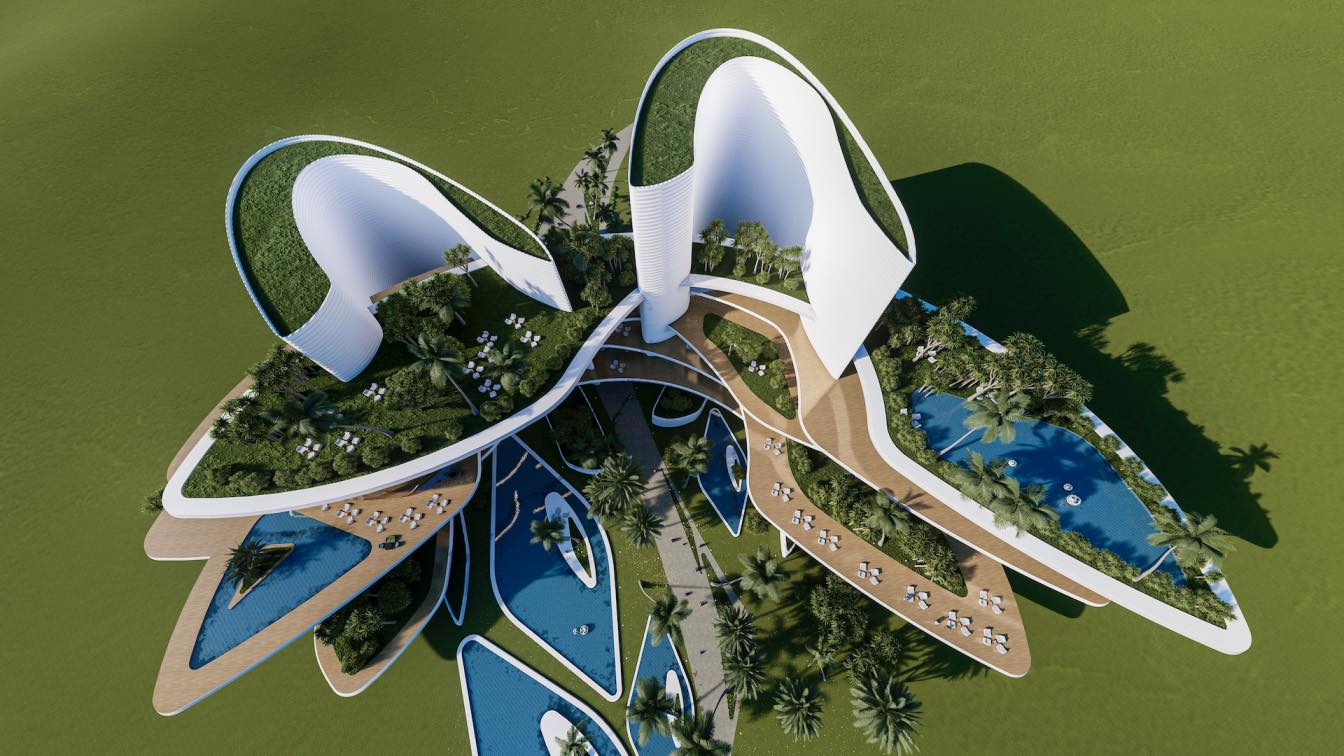W-LAB evaluates how people could survive in a possible post-climate change age scenario, gathering existing technologies and current bioconstruction solutions to shape a futuristic low-environmental impact habitat for a desert climate. The project focuses on protecting the perimeter with a radial distribution of the living units, and drought-resistant plants, creating a barrier that offers shelter and comfort. The aerodynamic shape of the cabins reduces the wind friction and improve stability, also minimizing sounds, vibrations, and site erosion.
With the current trend of CO2 emissions and rising temperatures, future architectural suggestions will need to cope with extreme climates and work actively as resource producers rather than passive consumers. The biocabins by W-LAB contain flexible spaces according to the user’s needs allowing them to work from home, exercise and grow food. Simultaneously the users are able to stay connected with the technological developments, as in this scenario, all internet broadband connections can be satellite provided and goods are able to be delivered by drones to any place.

Regarding the solar control shaded structures, and tensile fabrics together with the vegetation improve the thermal comfort and shade the surrounding spaces to mitigate the heat island effect with the central artificial oasis. This could passively climate the outdoor spaces, thanks to the evaporative cooling process. apart from the solar control, the architects proposed two ways of obtaining water for human consumption and outdoor evaporative cooling features. One way is from fog catchers capturing coastal humidity and fogs and the other system uses modular water desalination plants. The water recycling system is focused on reusing most of it, to be applied later for growing the plants.
In terms of energy production, it is obtained directly from solar radiation and wind, quite abundant and constant in the new desert climate. All the cabins are fully autonomous, avoiding the need for general power grids, and their maintenance. Furthermore, organic construction materials can be grown in desert locations. Plants, like agave, are a source of wood and fibres, that serve as structural elements, cladding, floors, insulation, ropes, and textiles.

Furthermore, aluminium could be an alternative for the metal elements in the construction, as its fully recyclable, and requires less energy in its manufacturing than steel. The interior serves as spaces for small indoor greenhouses and planters that can be used for part of the subsistence of the settlement’s inhabitants. To avoid permanent foundations, screw piles work as removable supports to be reused, after the life cycle of the cabin is over, reducing even more the impact on the ecosystem.














